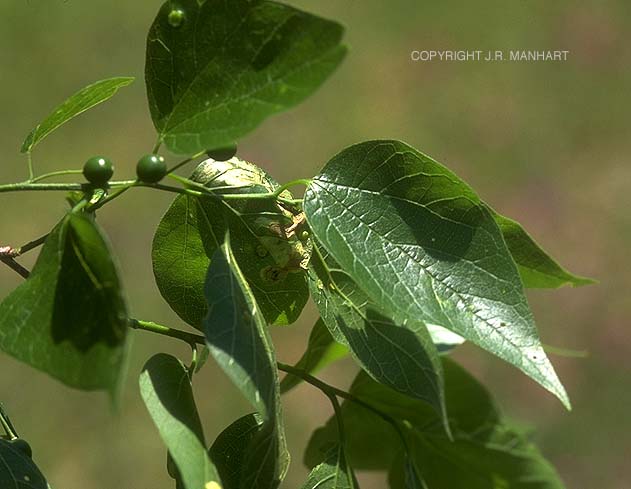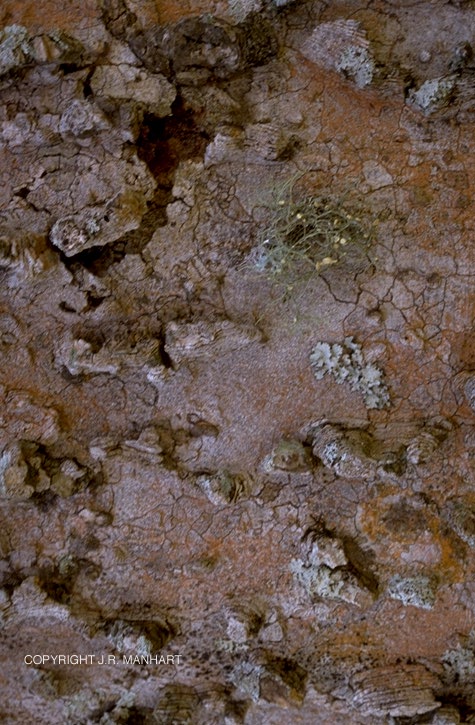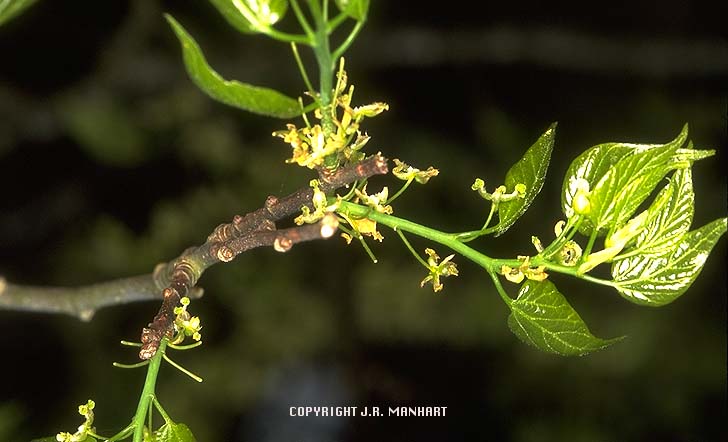Identification:
Description
LAEVIGATA: C. laevitigata is a tree growing to 20 meters high, with a high, rounded crown.
( Stevens, H.A. 1973.) LEAVES: The leaves of this tree are alternate and simple with three principle veins. They are shaped ovate to ovate-lanceolate, growing 4-9 cm long and 1.2-3.5 cm wide. This is more than twice as long as wide. The margin of the leaves is found entire or showing a few teeth. The upper surface of the leaves are light greenish yellow and are glabrous. The lower surface being a pale green with a few hairs in the vein axils.( Stevens, H.A. 1973.)
FLOWERS: The flowers bloom in mid-May. The flowers appear axillary at the base of new branches. ( Stevens, H.A. 1973.) These flowers can be found solitary or in small cluster of 2-3. The pedicels are about 4cm lon and are glabrous. The 5-6 calyx lobes are distinct and narrowly ovate. These lobes are green with as brown tip. The flowers have no petals. There are 5-6 stamens and white filaments. The anthers are found to be yellowish green at the center of the flower pubescent. The pistillate flowers are axillary and found toward the apex of the same branch. These appear in 2's or solitary. The pedicels are 4-6 mm long. The calyx lobes are in numbers of 4-6 and they are green. Radford, A.E., H.E. Ahles & C.R. Bell. 1968.
FRUIT: The fruit appears in the months of September and October. The pedicels are glaborous and 8-15 mm long. The fruit is 6-8 mm in diameter. It can vary from orange-red to a brownish-red. The seeds it produces are cream colored, 5-6 mm in length, and 4.5-5 mm in width.( Stevens, H.A. 1973.)

Branch with Fruit of C. laevigataCourtesy, Jim Manhart
TRUNK: The trunk is has light gray bark. The furrows are flat and broad with warty ridges. The wood this tree produces is lightweight and soft. This constitutes the weakness found in the light yellow lumber. ( Stevens, H.A. 1973.)

Bark C. laevigataCourtesy, Jim Manhart
Geography
Celtis laevigata L. |
||
| AREA | STATUS | REFERENCES |
| North America: Continental United States; Canada | Yes | Duncan & Duncan, 1988 |
| Eastern North America: United States east of Mississippi; Ontario and eastern Canada | Yes | Duncan & Duncan, 1988 |
| Southeastern United States: AL AR DE DC FL GA KY MD NC SC TN VA WV | Yes | Duncan & Duncan, 1988 |
| Southern Appalachian States: AL GA KY MD NC SC TN VA WV | Widespread | Duncan & Duncan, 1988 |
| Coastal Plain | Marginal | Brown, C. & K. Kirman. 1990. |
| Piedmont | yes | Radford, Ahles & Bell, 196 |
| Blue Ridge Mountains | Marginal | Radford, Ahles & Bell, 1968 |
| yes | Radford, Ahles & Bell, 1968 |
| Ridge and Valley | Yes | Jones & Coile, 1988 |
| Cumberland Plateau | Yes | Brown, C. & K. Kirman. 1990. |
| Central Arch | Marginal | Brown, C. & K. Kirman. 1990. |
| Georgia | Yes | Jones & Coile, 1988 |
| Clarke County, Georgia | Yes | UGA Herbarium Specimens |
| Sams Farm | yes | Ben Holland, Pers. Ob. |
| yes | Ben Holland, Pers. Ob. |
| ? | - |
| Possible | Ben Holland, Pers. Ob. |
| none ob. | Ben Holland, Pers. Ob. |
Natural History and Supplemental Information:
C. laevigata is a southern tree that has made this region its habitat for some time. It is a native tree that occurs in the south associated with other hardwoods such as oaks, beech, sweetgum, and ironwood. It is known to have a moderately high growth rate and can survive in most soils reguardless of pH but prefers a highly alkaline composition. This tree is also know to have a long life span. Although this tree is tolerant to many factors such as drought, pollution, and disturbance, its root system competes for nutrients with its counter part C. occidentalis. This tree often serves as a pioneer species in disturbed areas such as cracks in pavement and edges of buildings. Birds feed on the fruit of C. laevigata.( Odenwald, N. & H. Turner. 1996.)
Locating C. laevigata
The sugarberry tree can be found from New Mexico east to Virginia, and from Illinois south to Florida, This tree is common in river bottom lands, flood plains, and usually associates with other hard woods. Occasionally can be found in groups consistently pure. Sometimes to be found in other dryer habitats like highlands, and in fence rows.(Duncan & Duncan, 1988) In the plots observed at Sam's Farm, this particular species was not present.
References
- Brown, C. and K. Kirman. 1990 Trees of Georgia and Adjacent States. Timber Press, INC. Portland, OR.
- Cronquist, A. and H. Gleason. 1991. Manual of Vascular Plants of the Northeastern United States and Adjacent Canada. 2nd Ed. New york Botanical Garden, New York.
- Duncan, W.H. & W.B. Duncan. 1988. Trees of the Southeastern United States. THe Uneversity of Georgia Press. Athens, GA.(ISBN 0-8203-0954-0). 322 pages.
- Everett, T.H. 1968. Living Trees of the World. Chanticleer Press New York.
- Gray, A. 1864. Lessons in Botany. Ivison, Phinney, Blakeman & Co. New York.
- Hardin, J.W. 1992. Foliar Morphology of the Common Trees of North Carolina and Adjacent Sates. Dept. of Botany, North Carolina University. Raleigh, NC.
- Jones, S.B. & Coile. 1988. The Georgia Plant List. Dept. of Botany, University of Georgia. Athens. GA.
- Milne, L. & M. Milne. 1975. Living Plants fo the World. Chanticleer Press. New York.
- Odenwald, N. & J. Turner. 1996. Identification Selection and Use of Southern Plants for Landscape Design. 3rd Ed. Claitor's Publishing Division. Baton Rouge, LA.
- Radford, A.E., H.E. Ahles & C.R. Bell. 1968. Manual of the Vascular Flora of the Carolinas. university of North Carolina. Press. Chapel Hill, NC.(ISBN 0-8078-1087-8.)
- Stevens, H.A. 1973. Woody Plants of the North Central Plains. University Press fo Kansas. Lawrence, KA.
- Manhart, Jim. Texas A&M University, Dept. of Biology; http://csdl.tamu.edu/FLORA/MANHART/homepage.html
Internet Access Sources:
Last Updated on July 10,1998 Benjamin H. Holland
